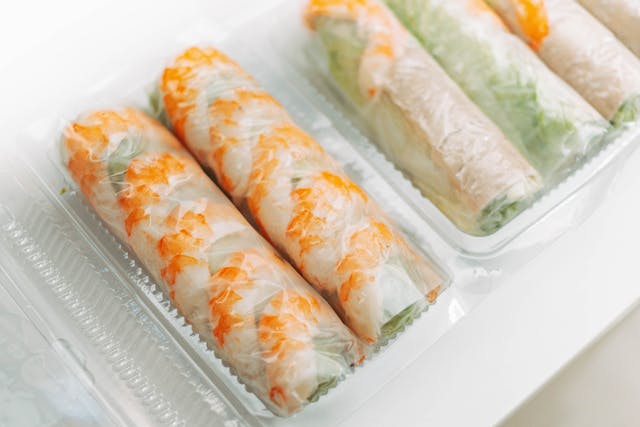
With its distinct flavours and rich cultural legacy, Omani cuisine is gaining popularity around the world and enthralling both residents and tourists from other countries. Some basic ingredients, like wheat, rice, vegetables, spices, and dates form the basis of the cuisine, and the addition of meat, and fish creates a palate-pleasing harmony.
For ages, trade and fusion have been integral parts of Oman, which has directly impacted Omani cuisine. The cuisine of Oman incorporates spices from India, as well as East Africa. Even coconut milk is a major ingredient in some Omani cuisines. If you are one of those real gourmets who want to discover the unique Omani food, fly to Muscat. The Salam Air booking will help you get the best deals to Muscat from prime cities in Asia or the Middle East.
You may go on a gastronomic adventure and sample some of the greatest cuisines the country has to offer when you visit Oman.
- Shuwa
A traditional Omani delicacy, shuwa, is usually prepared during festivals or particular occasions. Slow-roasted lamb, sheep, goat, or even camel, soaked for several hours in a spice mixture, serves as the focus of the meal.
Shuwa is prepared through a complex process. The meat is wrapped in bags made of dried banana or palm leaves after being marinated in a mixture of cumin, garlic, red pepper, cardamom, coriander, turmeric, and vinegar. The burning oven is then filled with these bags and shut, preventing any smoke from escaping. While some cultures simmer their meat for a whole day, others think that the meat tastes best after 36 or 40 hours.
The slow-cooking method coats the meat with a rich and thick layer of spices, resulting in extremely soft meat that easily slides off the bone. The succulent beef comes with bread or rice.
- Makbous
Get your taste buds ready for Makbous, a well-liked rice meal that is closely related to Kabsa, a well-known dish in Yemen. Makbous is a common dish on the menu of most Omani restaurants, and it is mostly prepared by the locals.
A blend of spices, including saffron, parsley, and black lime, is used to marinate chicken and veggies and cook them with aromatic basmati rice. Garnished with fried onions, almonds, and raisins, the meal creates a harmonious blend of flavours. Makbous is a flavourful and filling dish that goes well with tomato chutney, yoghurt, and salad.
- Harees
Harees is yet another Omani traditional dish you cannot forget to have in Muscat. Most people consume this porridge-like meal on significant family occasions, including weddings, as well as on national and religious festivals.
The preparation of harees involves steeping wheat for many hours in water that has a hint of salt. After that, meat—typically lamb or chicken—is added and cooked for an additional lengthy period—at least four hours. Next, spoon local ghee over the meal.
Another way to prepare it is to put the wheat and meat in the pot, then add salt and water, and simmer it for a very long period. Cardamom and cinnamon are two fragrant spices that provide depth and flavour to savoury dishes. Typically, it comes with a sweet sultana or date sauce on the side. Some chefs enjoy topping harees with finely chopped fried onions.
- Arsia
Pounded rice, meat, spices, and milk are the ingredients of arsia. This recipe tastes amazing, but it looks like mushy muesli or hummus at first. You can find this savoury dish usually served especially during Eid.
- Halwa
This delicious treat has long been a mainstay in Omani homes and festivities, with profound cultural significance. The beloved emblem of Omani customs and hospitality is still the halwa.
What is more significant here are the carefully chosen ingredients and detailed preparation methods. Among the ingredients, wheat flour, rosewater, sugar, cardamom, ghee, and saffron are important. Omani halwa also has cashews, almonds, and pistachios for better taste. Combining the rich flavours and scents that are characteristic of the Arabian Peninsula, these ingredients show the historical links the peninsula had with the spice trade.
There are also interesting regional differences in Omani Halwa. For instance, the city of Salalah uses frankincense to honour the city’s historical significance as a hub for the frankincense trade by giving the halwa a delicate, woodsy scent.
The heavy use of ghee in the preparation process is why halwa in Nizwa, the old capital of Oman, is known for its creamier texture. Recognised for its marine past, the city of Sur provides a coconut-infused halwa that reminds of its coastal influence while adding a delightfully tropical touch.
- Bread
Khubbz ragag, or Omani bread, is a unique and delectable treat. All you need to make it is wheat, salt, and water. The dough is prepared to be either extremely moist or extremely sticky, similar to pancake batter. Either way, you end up with a beautiful, extremely thin bread that nearly looks like lace. Cooking takes place over a flame on a round, sizable steel griddle.
Photo by FOX ^.ᆽ.^= ∫:

